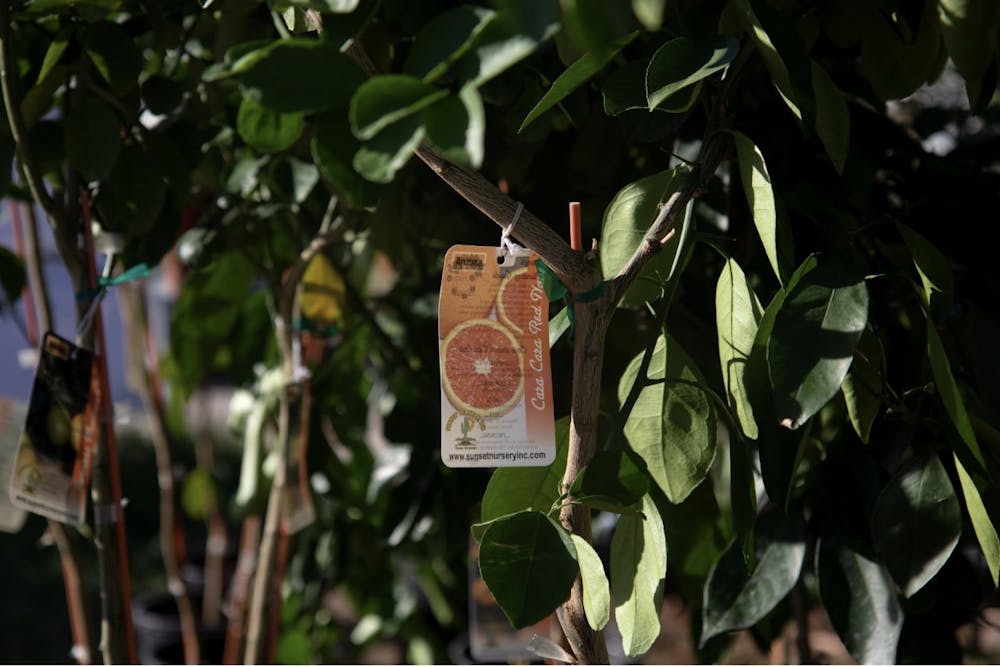Local nonprofit groups and volunteers gathered in a central Phoenix neighborhood on Saturday, Oct. 4, and worked to plant trees to increase heat relief for nearby residents.
Attendees, organized by the Phoenix Urban Food Forest Initiative, planted various species of native Arizona plants and trees in a neighborhood that lacked sufficient shade canopy.
This event is part of a larger effort to mitigate the city’s intensifying heat island effect, which causes more developed or urban areas to experience disproportionately high temperatures compared to neighboring rural areas.
The state has consistently experienced increasing summer temperatures, with this summer being the fourth-hottest on record.
With the rise of both temperatures and heat-related fatalities, community-led action groups are working to transform shade from a simple comfort to a key component of public infrastructure.
However, the push for more greenery in Phoenix isn’t just about neighborhood aesthetics; it also concerns equity and prosperity.
Low-canopy communities within the state, which often disproportionately house lower-income or minority populations, can average daily temperatures 8-15 degrees higher than wealthier, more shaded parts of cities.
“Phoenix’s desert climate already pushes temperatures to the extreme, and when you add rapid urban development, you amplify that effect,” said Urban Climate Researcher and Professor Ariane Middel.
“The city’s geography means there’s little natural cooling from moisture or shade,” Middel said. “Urban materials like asphalt and concrete absorb and store solar energy during the day, and release it slowly at night, keeping nighttime temperatures high and causing an urban heat island.”
In response to these conditions, community advocates are pushing for more shaded, sustainable neighborhoods, arguing that increased greenery and tree cover are one of the most efficient ways to combat urban heat.
“We need shade. We're building up right now, and as we build up more and we have more concrete, the more heat we're trapping in this city,” Christopher Macy, founder of the Phoenix Urban Food Forest Initiative, said. “So we should have more trees to go with it.”
In March of 2020, the project started in Macy’s backyard to plant fresh gardens in local neighborhood parkways. The Phoenix Urban Food Forest Initiative has now covered nearly 30 parkways with over 250 trees, providing both shade and fruit to residents.
According to Macy, changes are already becoming visible.
“Already, more birds are coming back, and you have neighbors who are walking the neighborhood more. The more we plant these trees, the more neighbors take pride in the neighborhood again,” Macy said. “They're coming out, they're walking with their families, and you just start seeing the community come back to life.
Much of this project’s early guidance stemmed from Growing to Give, a climate-focused nonprofit with a similar focus on community sustainability and food accessibility. The two organizations frequently collaborate on efforts to increase greenery across Phoenix.
These community action groups are frequently at the forefront of Phoenicians’ battle to create a more shaded, heat-resilient community for its residents.
“We can turn the desert into an oasis without using a lot of water,” Siobhan Shaw, co-founder of Growing to Give, said. “If we just plant the right plants, use the right water-saving technologies, and open our minds to all the good nature brings to us, and just allow it to happen.”
The Phoenix Urban Food Forest Initiative plans to host its next planting event in the Spring, continuing its mission of growing a cooler, greener city, one tree at a time.

